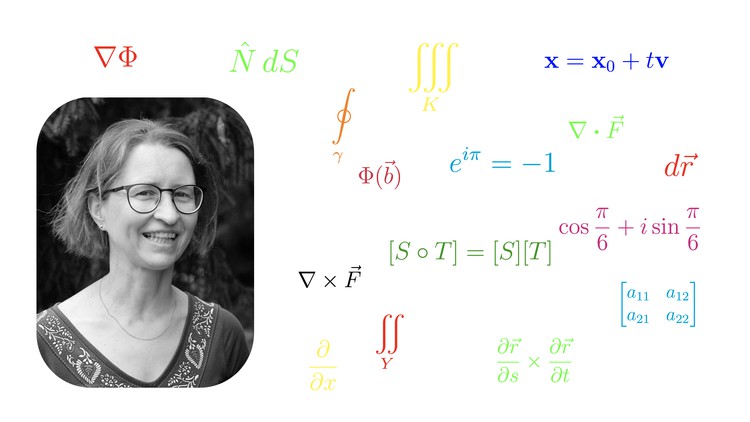
Mathematics from high school to university
What you will learn
Completing the square: how it is done and why the method works (variants for 1, 2, and 3 variables); a geometric illustration of the method and its name.
Completing the square in one variable for solving quadratic equations with help of the discriminant and the quadratic formula; derivation of the formula.
Completing the square in one variable for plotting polynomials of second degree with help of graph transformations of the parabola y=x^2; finding new vertex.
Completing the square in two variables, one at a time, for identifying conic sections: circles, ellipses, parabolas, and hyperbolas.
Completing the square in three variables, one at a time, for identifying quadric surfaces: spheres, ellipsoids, hyperboloids, double cones, etc.
Completing the square in two or three variables for definiteness of 2×2 or 3×3 matrices / corresponding quadratic forms in 2 or 3 variables.
Description
Mathematics: Completing the square
Mathematics from high school to university
1. Completing the square: how the method works, and why
You will learn about the method of completing the square, how it works and why. This remarkable (and elementary!) method has surprisingly many applications in advanced mathematics, and this is why it is really good to master it. Geometrical illustrations will give you a nice visual explanation of both the method and the name of the method.
2. A glimpse into some applications of completing the square
You will learn about various applications of completing the square, starting with quite elementary applications (high-school level) such as solving quadratic equations and drawing graphs of second degree polynomials, and continuing with some information about more advanced applications such as identifying quadratic curves and surfaces, determining definiteness of square matrices (or corresponding quadratic forms), and optimization of functions in two or more variables. These applications will not be treated in this course due to time constraints, but you will get information in which courses you find both theory and practice on the topics. You will also get some practice in completing the square. In this brief course I have chosen to inform you about applications of completing the square in Algebra, Calculus, and Linear Algebra and Geometry.
A note: Another typical application of completing the square (not discussed in this course) is in Calculus 2, when you must integrate a rational function (a function of the type p(x)/q(x), where both p(x) and q(x) are polynomials). After performing partial fraction decomposition, you will represent your function as a sum of simpler fractions, with denominators being first-degree polynomials or second-degree polynomials without real zeros. This second type, when integrated, will lead to some function defined by arctan; in order to perform this integration in a correct way (variable substitution), you must… complete the square! I will tell you more about it in my upcoming course “Precalculus 2: Polynomials and rational functions”.
3. Extras
You will learn about our other (published) courses and about the courses we plan to create in the near future.
Content